TO MY READERS: HOW TO USE THE BLOG
Click Here
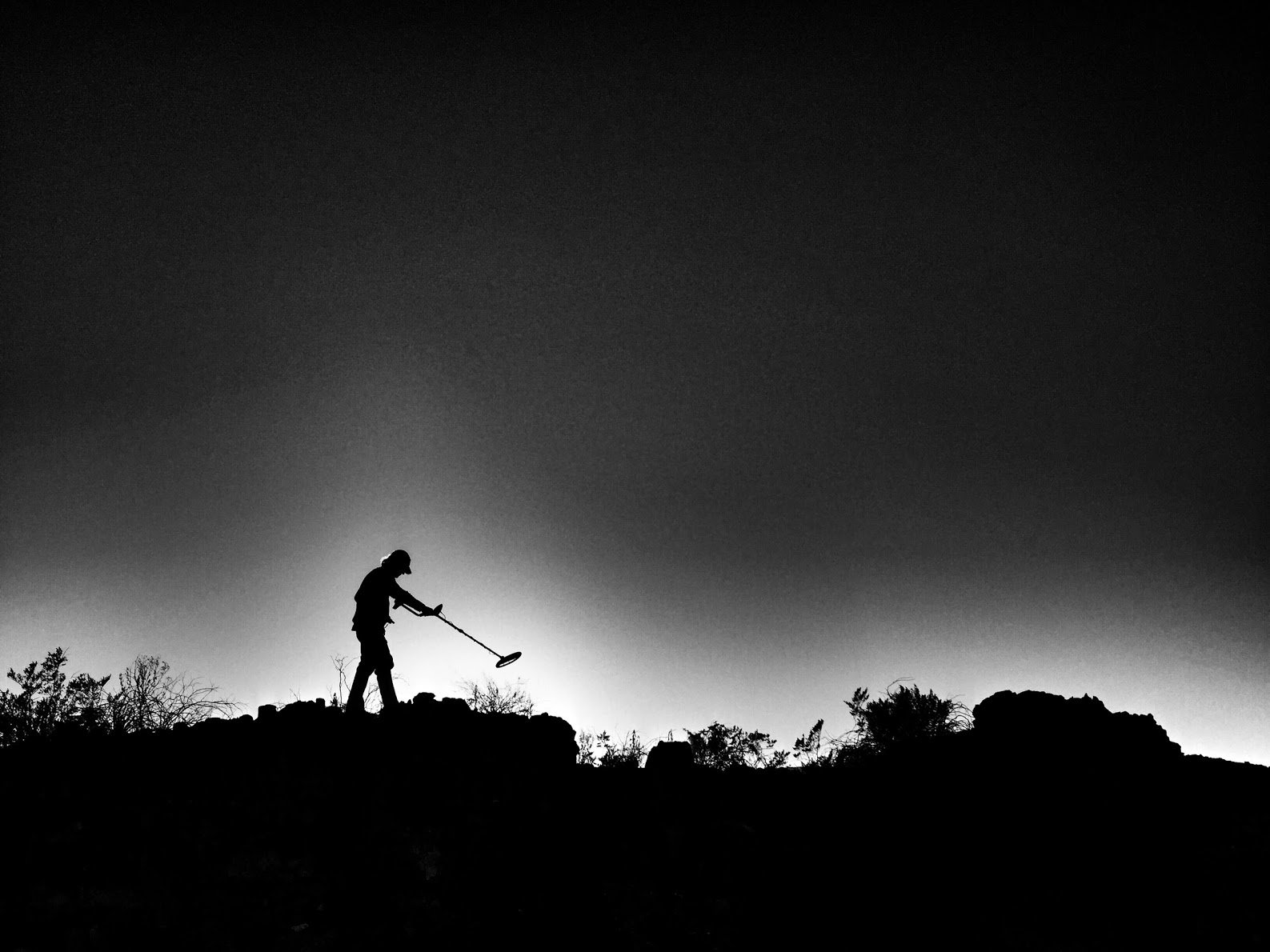 Photo by Jessica Lutz
Photo by Jessica LutzOne January night in 1918 a mass murder took place in far northwest Presidio County, Texas. It happened not far from a tiny, little known village called Porvenir. In Spanish, Porvenir means future however there was no future for the some 140 Mexicans living there at the time who subsisted by farming, raising goats, sheep, a few cattle and horses, casino canada. They lived in crude huts called jacales constructed with stone or adobe walls and thatched roofs of ocotillo. While some were U.S. citizens many of the residents of Porvenir came to Texas trying to escape the terrible civil war that consumed Mexico during those years. Porvenir had a school and a cotton gin but no store and the nearest church was located just across the Rio Grande in nearby Pilares, Chihuahua.
Beginning in 1910 and lasting for a decade, the Mexican revolution created havoc in Mexico as well as along the Texas and New Mexico border. As many as a million people lost their lives or simply disappeared during this war. Bandit raids along the border became more and more common. On March 9, 1916 Pancho Villa led some 500-mounted horseman in an attack on Columbus, New Mexico that killed 18 Americans and left the business district of the little town in ashes. As a result, President Woodrow Wilson ordered General John “Blackjack” Pershing and four regiments of cavalry supported by two regiments of infantry into Mexico to kill or capture Villa. The expedition ended in failure about a year later after the elusive Villa simply vanished into the Sierra Madre. A few months after the Columbus raid President Woodrow Wilson deployed more than 100,000 National Guard troops to guard the Mexican border. On May 5, 1916 as Pershing’s army hunted for Villa another group of bandits attacked Glenn Springs, Texas located in today’s Big Bend National Park. The raiders killed three troopers of the Fourteenth Cavalry and a four-year-old boy and set Glenn Springs ablaze. On Christmas Day, 1917 some 45 raiders thought to be Villistas attacked the Brite Ranch located near Capote Mountain in western Presidio County. They looted the Brite store and hung mailman Mickey Welch from the rafters before cutting his throat to make sure they had killed him.
All of this violence spread terror among Big Bend residents. Large numbers of people left their border homes seeking safety in Marfa and other west Texas towns. There were heated demands for retaliation. Sadly these demands for vengeance developed into reality and revenge descended upon the people of Porvenir who had nothing to do with any of these raids. Shortly after after midnight on January 28, 1918 some forty U. S. cavalry troopers of Troop G, Eighth Cavalry commanded by Captain Henry H. Anderson along with about ten or more Texas Rangers and a group of ranchers surrounded Porvenir in the darkness of a freezing cold night. Some of the ranchers wore bandanna masks to hide their identities as they awoke the townspeople and ordered everyone outside where someone built a fire. According to several witnesses, the soldiers sat atop their horses and did not dismount simply sitting around the village so no one could escape. The Rangers started separating the men from the women.
They selected 15 men and boys with ages ranging from 16 to 72 years and marched them off into the darkness. Not long after this many gunshots rang out in the darkness as the fifteen victims were shot to death without ceremony. The sound of gunfire produced instant pandemonium in the village as the survivors in the village realized that something dreadful had taken place. Fearing the worst no one dared to venture out into the darkness to see what had happened. Sometime before dawn thirteen-year-old Juan Flores made his way to school master Harry Warren’s house north of Porvenir to report the shooting. Young Flores was lucky to be alive. Someone grabbed him the night before and shoved him into to the group to be killed. But a rancher said the Flores boy was too young and somehow got Juan released before the killing took place. The following morning Juan accompanied the schoolmaster to a place south of Porvenir until they came across a pile of bodies guarded by the soldiers. It was a ghastly scene. According to Juan Flores, the bodies appeared to have been tied together and shot so many times they appeared to have been purposely mutilated. Juan saw his father’s body. Longino Flores was almost unrecognizable to his son since part of the man’s head had been blown away. At some point that morning an old woman crossed the Rio Grande from Pilares driving a cart. The soldiers helped her load the bodies on to the cart and she took them to Mexico where they were buried in a mass grave in the Pilares churchyard.
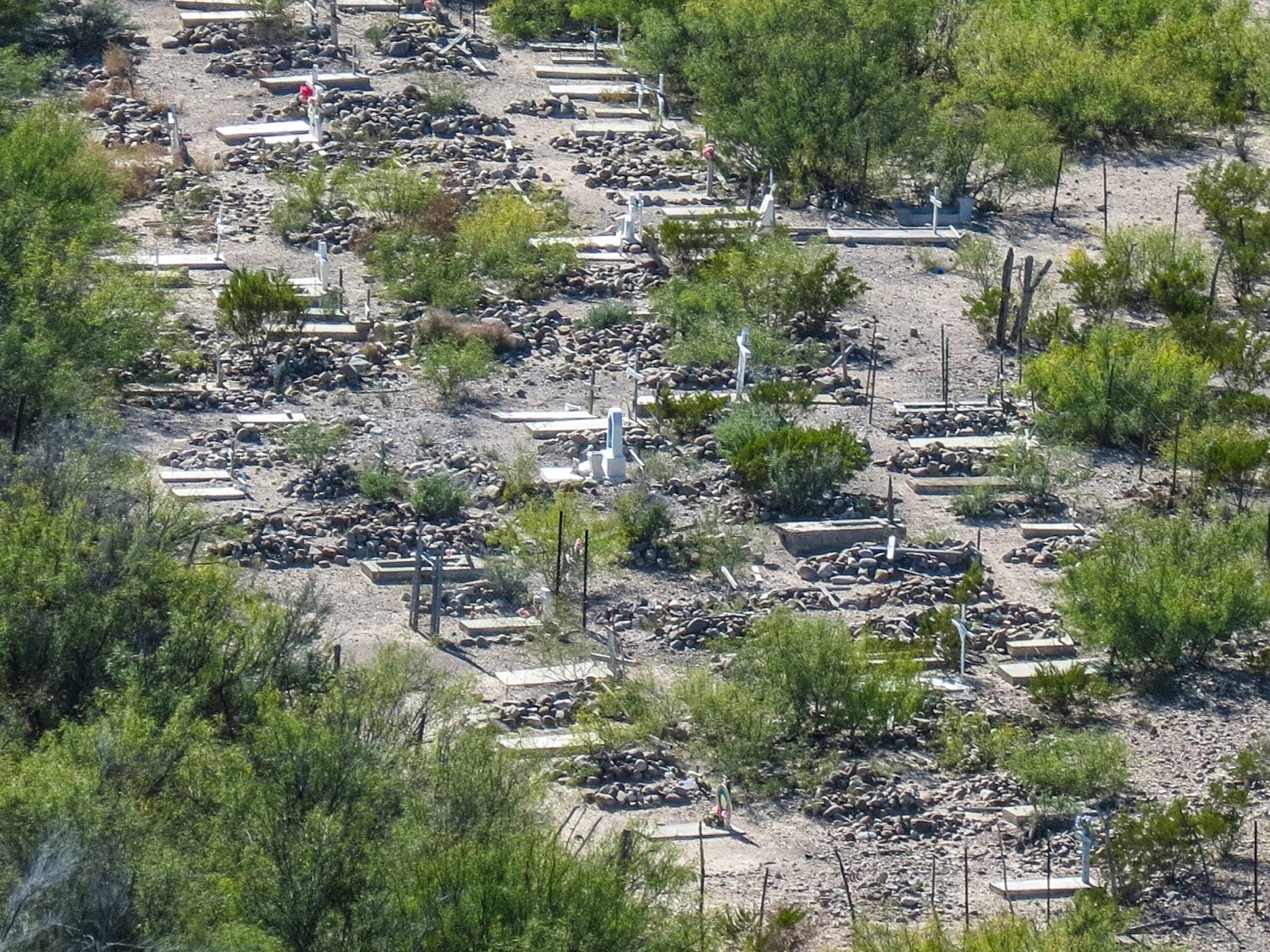
Above is photo of Pilares, Chihuahua graveyard where Porvenir massacre victims were buried in a mass grave.
Photo by Jessica Lutz
The survivors fled the place, some going to Mexico and other locations. A few days after the massacre, a contingent of troopers from Camp Evetts came to Porvenir and knocked down and burned the abandoned jacales the people of Porvenir once called home. The village ceased to exist.
Texas Ranger Captain Monroe Fox commander of Ranger Company B attempted to whitewash the massacre waiting some three weeks before he even filed a report of the event. The captain claimed his men had gone to Porvenir in search of bandits and when they arrived came under fire from the brush. They returned fire and the next morning found fifteen dead bodies. Captain Anderson of Troop G Eighth Cavalry reported that his men came upon the bodies the morning after the massacre and had no idea how they had been killed. A few, very few newspaper articles about the massacre ever went to press but in June 1918 Governor William B. Hobby fired five of the rangers who had been at Porvenir and disbanded Company B. Captain Fox and several other rangers resigned but no criminal actions were ever taken against anyone for the crime.
Glenn Justice started researching the story of the massacre in the late 1980’s and presented a paper about it about it to the West Texas Historical Association before publishing his book “Revolution On The Rio Grande” that included a chapter on the massacre in 1992. My research took me as far as the National Archives in Washington D. C. and Suitland, Maryland where Justice used the Freedom Of Information act to obtain vital previously classified army documents about the massacre.
Slowly the paper evidence concerning the massacre grew to the point that it left little or no doubt that the massacre had actually taken place and who had been involved. Only one vexing question remained; that being who had actually done the killing the fifteen that tragic night? Then in the spring of 2002 Justice learned of a Porvenir survivor still living. His name was Juan Flores. At that time Mr. Flores was ninety-seven years of age but in good health and his mind still sharp. Remarkably, he did not even tell his family about the massacre until his last years. Mr. Flores suffered from terrible nightmares about the massacre that his family could not understand. Finally he decided to tell the story of what he had witnessed that awful night. In November 2002, Mr. Flores made a journey to Porvenir massacre site and revealed to those present the exact place where the killings took place. Remarkably some cartridge casings still lay on the ground and metal detectors indicated the presence of many more at the site. Justice picked up a few and over the next decade returned to Porvenir many times after that and each trip found more and more cartridge cases, bullets, bullet fragments and other artifacts.
In 2015 former Texas Land Commissioner Jerry Patterson and Austin lobbyist Lee Woods offered their help with the Porvenir project. All ll felt it important that the little known Porvenir massacre story deserved being told and it would make a great topic for a documentary film. But, at the same time, realized that in order to accomplish this archaeological work had to be done at the massacre site. Also it was necessary to shoot at least enough video to put together a documentary film trailer to help us raise money to fund the project. Archaeologist and historian David W. Keller had long been familiar with the work at Porvenir and kindly agreed to help us assemble a team to investigate the site. David headed up the archaeologists who agreed to help with the work including Sam Cason, Tim Gibbs and Amber Harrison.
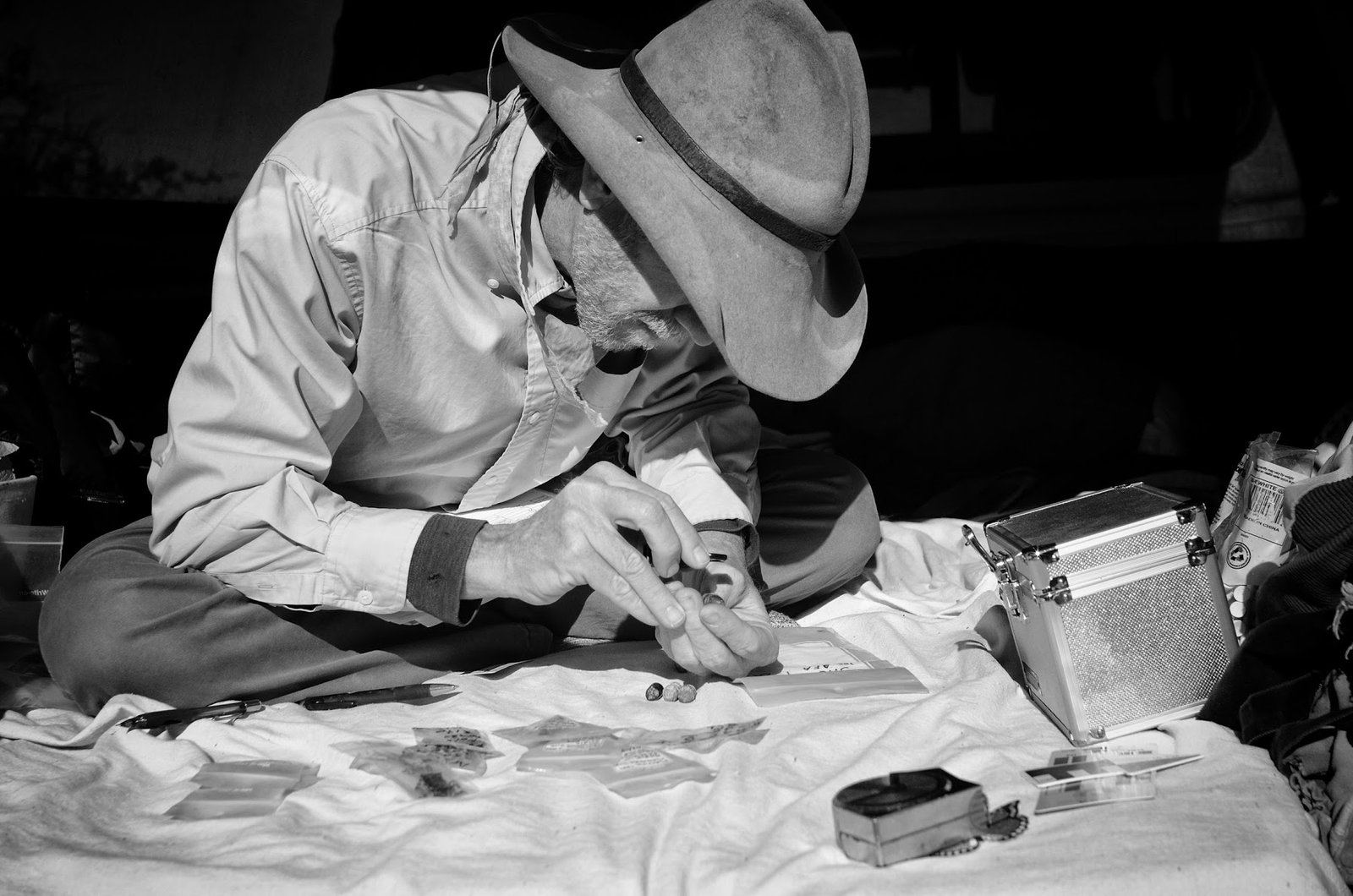
David Keller examines artifacts
Photo by Jessica Lutz
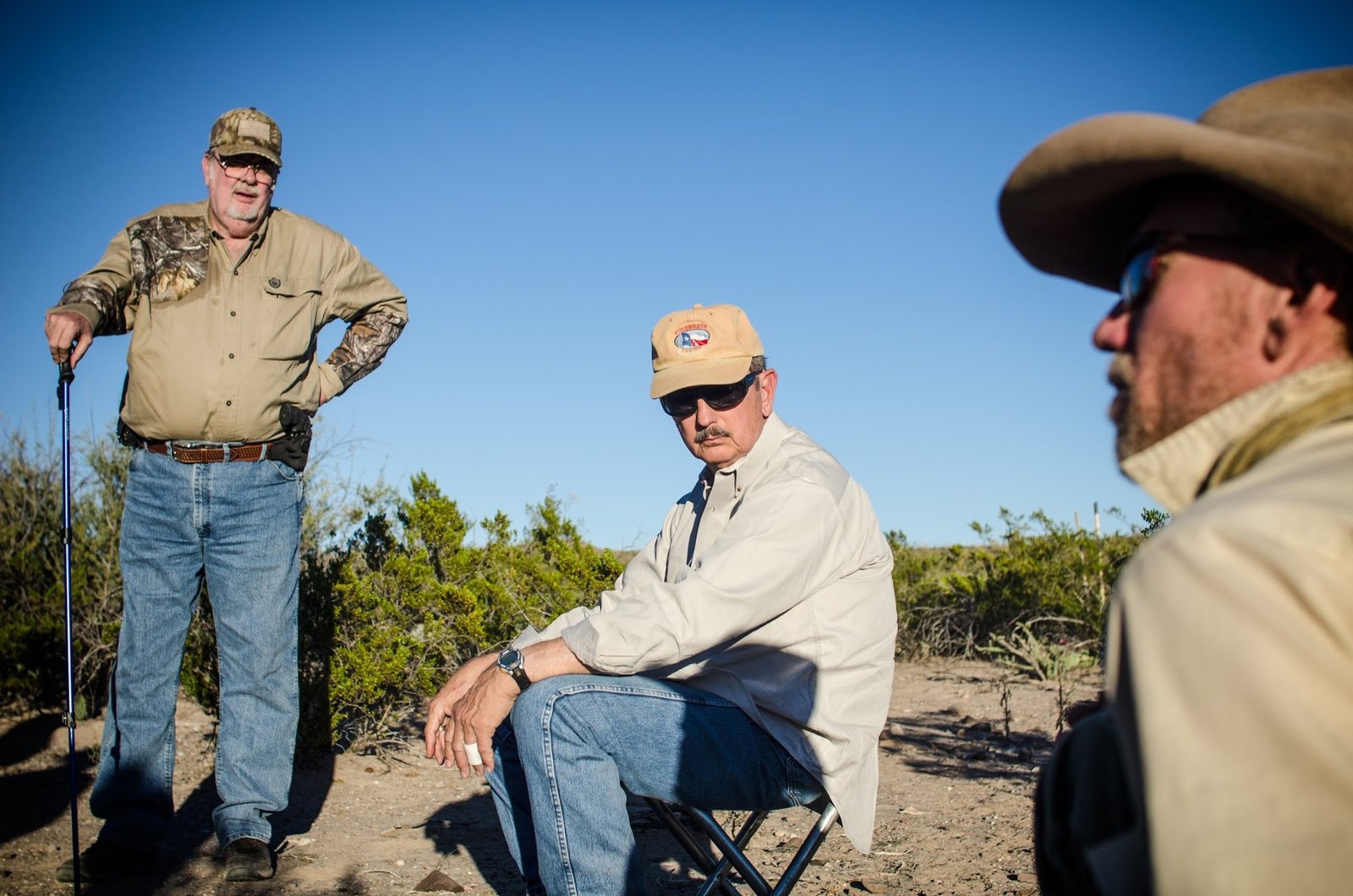
Glenn Justice, Jerry Patterson and David Keller
Photo by Jessica Lutz

Filmmaker Ford Gunter videos archaeologists at work
Photo by Jessica Lutz

Sam Cason pilots his drone making photos to be used for high definition maps
Photo by Jessica Lutz
In addition to being an archaeologist, Sam has expertise doing photographs with aerial drones that will prove to be most helpful in mapping some fifteen acres surrounding the massacre site. With the drone and the high-resolution photos it could make would allow us to map the location of each of the artifacts that were found. The archaeologists also planned an intensive five-acre metal detector survey on foot around the site. We employed the services of filmmaker Ford Gunter and his assistant Patton Baker to film archaeological work at the site, do interviews and also shoot aerial footage of the massacre site as well as the village of Porvenir and surrounding countryside.
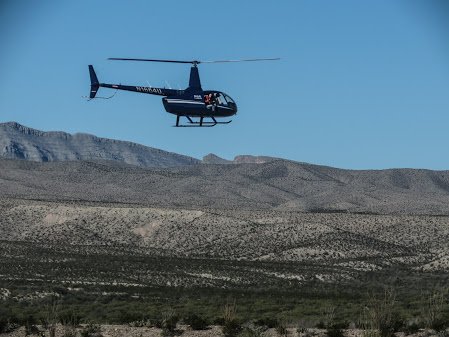
Stanley Jobe pilots his helicopter while Ford Gunter shoots video
Photo by Jessica Lutz
Stanley Jobe of El Paso was kind enough to provide a helicopter to do our aerial filming. On Friday, November 20, 2015 the Porvenir expedition set out for the site of the massacre. Because of the extremely remote location we had to camp for the next three nights. A cold front blew in and the first two nights plunging temperatures into the high 20’s with high winds. At first the expedition members didn’t think the helicopter could even fly in such conditions but fortunately by Sunday the weather cleared and could not have been nicer.
Photo by Glenn Justice
One of the .45 Colt bullets found at the massacre site
Photo by Glenn Justice
A 30.06 case along with assorted .45 bullets discovered at the massacre site
Photo by Glenn Justice
The archaeologists unearthed 27 new artifacts, mostly bullets, bullet fragments and cartridge casings. Up to that date, I previously found 21 artifacts giving us a total of 48 artifacts. The cartridge cases and bullets found came in a number of calibers including 30.06, .45 Colt, and .45 acp. The head stamps on the cartridge cases are dated and most were manufactured by two United States Army ammunition manufactures. Some were made by the Frankfort Arsenal of Philadelphia, Pennsylvania that made ammunition for the U.S. Army from 1816 until it closed at the end of the Vietnam War. Other cartridge cases found at the massacre site had been manufactured by the Union Metallic Cartridge Company a division of Remington Arms that made rifle and pistol ammunition for the U. S. Army from the time of the Civil War. The head stamp dates on all of the ammunition ranged from 1909 to 1917. It should be noted that guns carried by most Texas Rangers during the time of the massacre were revolvers chambered in the .45 Colt caliber and 30-30 Winchester saddle guns. No .30-30 cartridge cases or bullets were found at the massacre site. Some U.S. Army troopers carried .45 caliber revolvers but generally the 1911 Colt Automatic Pistol were carried mainly by officers since the weapon was in short supply during the World War I years.
Jerry Patterson photographs artifacts while Steve Anderson and Glenn Justice look on
Photo by Jessica Lutz
Overall everyone who took part in the archaeological work at Porvenir considered the finds to be exceptional. Principle archaeological investigator David Keller summed up the project “Considering that I was skeptical that we would find additional materials, I was pleasantly surprised by the volume and consistency of our finds. The intensive survey also revealed a highly patterned artifact distribution. I can say with a fair degree of confidence that the artifactual distribution, the types of artifacts, all strongly conform to the hypothesis that this was the site of the Porvenir Massacre of 1918. The findings also strongly implicate the U.S. Cavalry.” Our next step is to have the artifacts carefully examined by an expert skilled in ballistic analysis.
Glenn Justice
[ view entry ] ( 1535 views ) | permalink |
<<First <Back | 3 | 4 | 5 | 6 | 7 | 8 | 9 | 10 | 11 | 12 | Next> Last>>